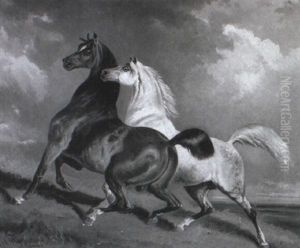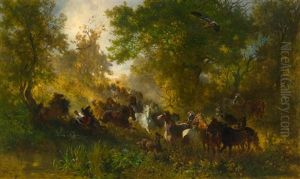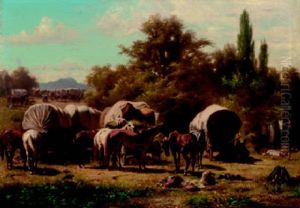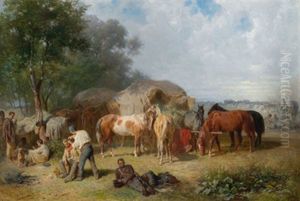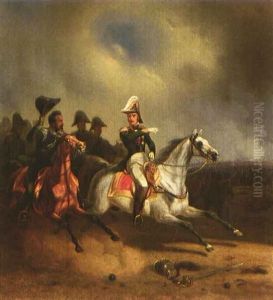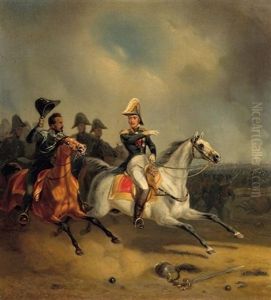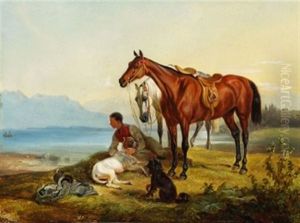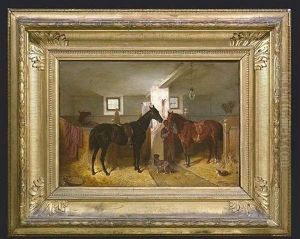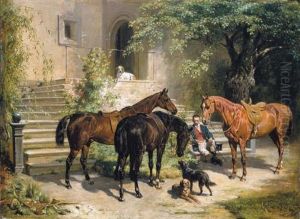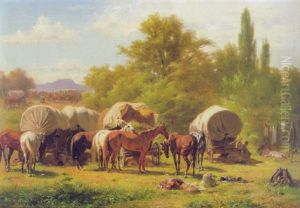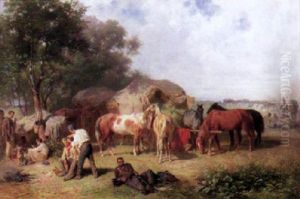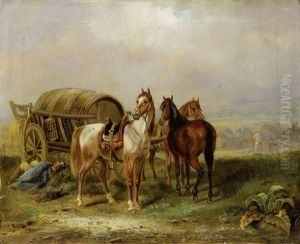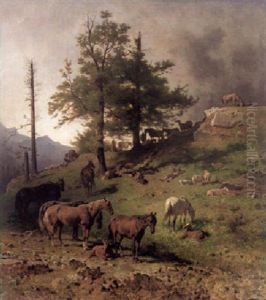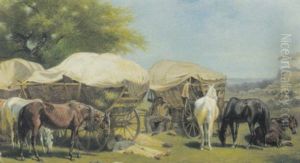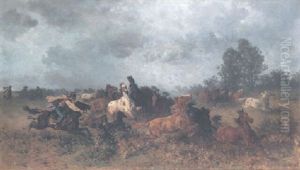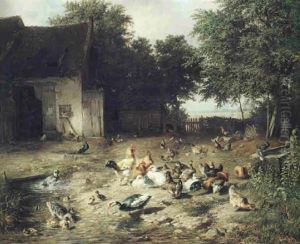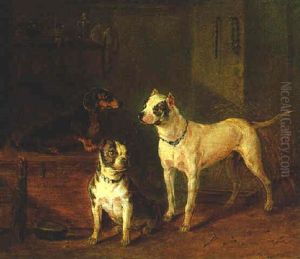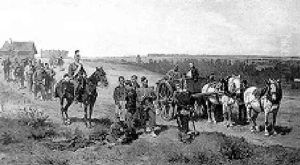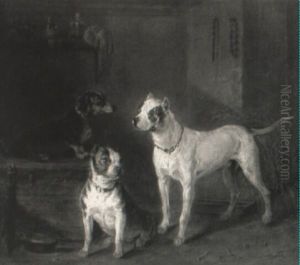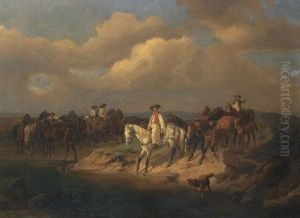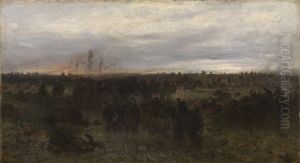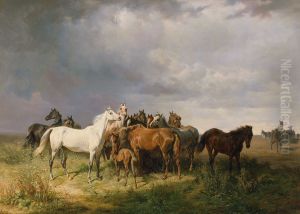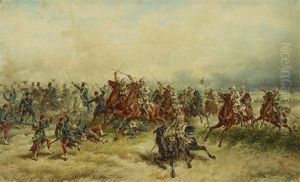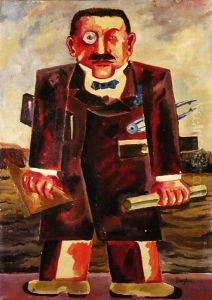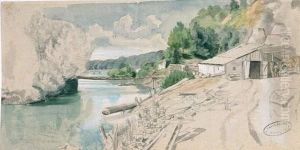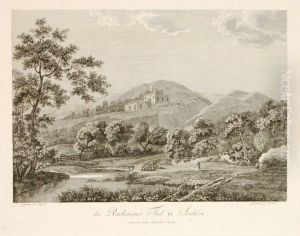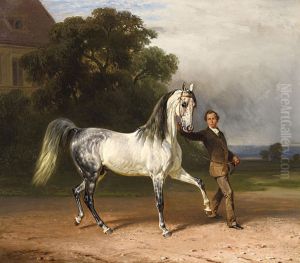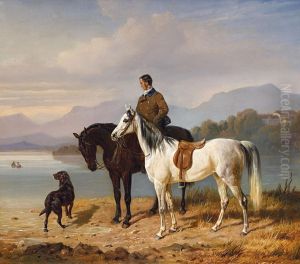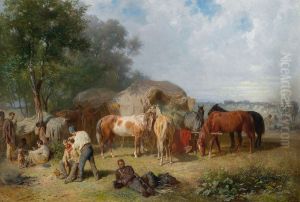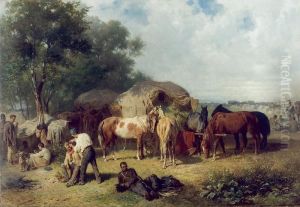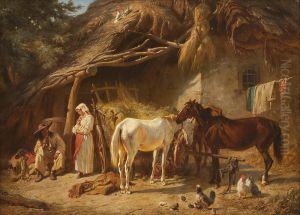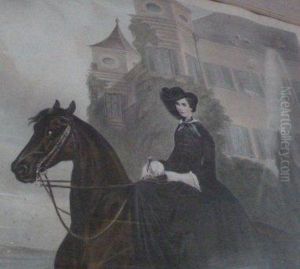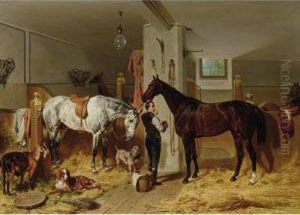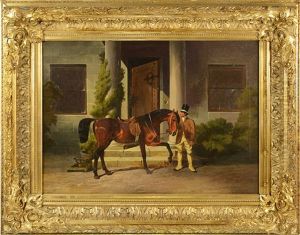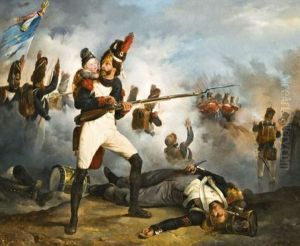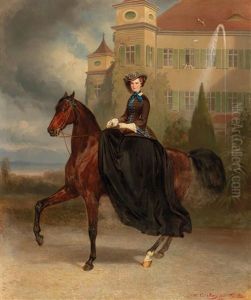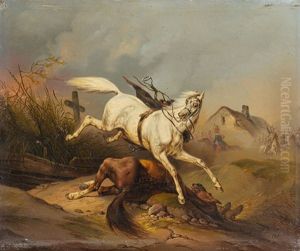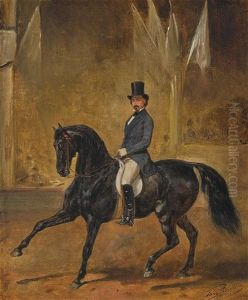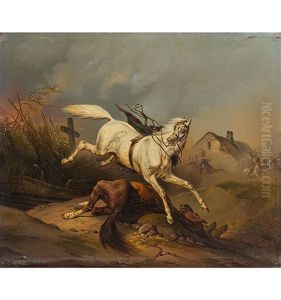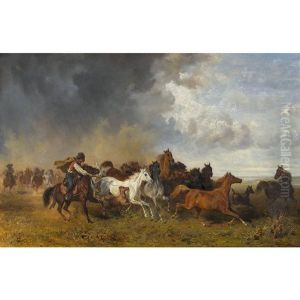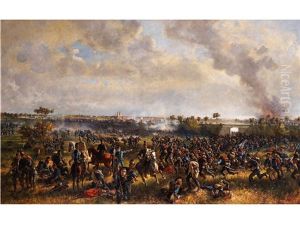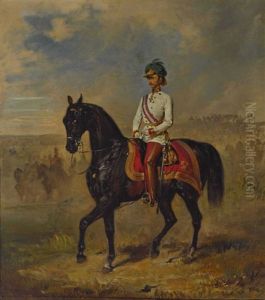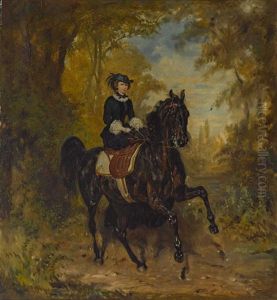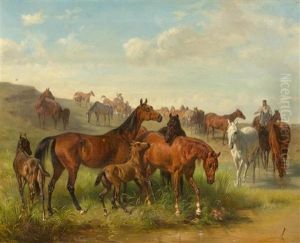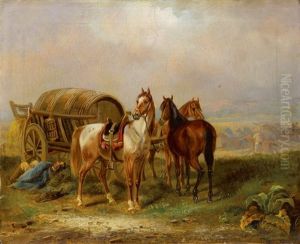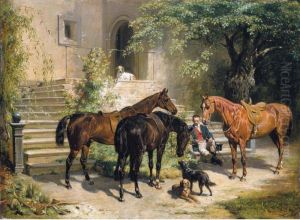Franz Adam Paintings
Franz Adam was a notable 19th-century German painter, best known for his detailed depictions of military subjects, battles, and equine themes. Born on May 4, 1815, in Milan, which was then part of the Napoleonic Kingdom of Italy, Adam was part of a family of artists; his father, Albrecht Adam, was a distinguished painter of horses and battle scenes, which significantly influenced Franz's artistic development.
Adam's early education was under the guidance of his father, and he later attended the Academy of Fine Arts in Munich, where he honed his skills in painting. His talent was recognized early on, and he gained a reputation for his ability to capture the essence of military life and the heat of battle with accuracy and a keen eye for detail.
Throughout his career, Franz Adam traveled extensively, which allowed him to observe various military campaigns firsthand. He was particularly known for his works depicting scenes from the campaigns of the Bavarian army. One of his most famous works is the 'Battle of Custozza', which portrays the 1848 battle between the Austrian Empire and the Kingdom of Sardinia during the First Italian War of Independence. His paintings were celebrated for their realism and became valuable as historical documents of the period's military apparel and tactics.
Adam's style was characterized by precise detail, vibrant color, and dynamic composition, qualities that made his works popular among military officials and enthusiasts of military history. Beyond battle scenes, he also painted portraits, landscapes, and genre scenes, but it was his military art that earned him the most acclaim.
Later in his life, Adam became a member of the Munich School, a group of 19th-century painters who were known for their realistic and detailed genre works, often with a focus on Bavarian subjects. His works continued to be sought after, and he produced a substantial body of art before his death on September 30, 1886, in Munich.
Today, Franz Adam's paintings are held in high esteem and can be found in numerous art collections, museums, and galleries around the world. His contribution to the genre of military art remains significant, offering insight into the military history of the 19th century as well as the broader European art movement of the time.

